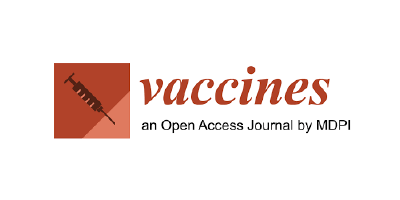
by admin | Nov 15, 2021 | Publications
Shirin Heidari, Alice Palmer-Ross, Tracey Goodman
Vaccines – November 15, 2021
Sex and gender have implications for COVID-19 vaccine efficacy and adverse effects from the vaccine. As vaccination is one of the key responses to the COVID-19 pandemic, it is vital that sex and gender differences be acknowledged, measured, and analysed in clinical research. Here, we systematically review published COVID-19 vaccine trials, both interventional and observational, to assess the quality of reporting of sex and gender.
Continue reading

by admin | Nov 8, 2021 | Publications
Sanne A E Peters, Thomas F Babor, Robyn N Norton, Janine A Clayton, Pavel V Ovseiko, Cara Tannenbaum, Shirin Heidari
BMJ Global Health – November 8, 2021
This year marks the fifth anniversary of the publication of the Sex And Gender Equity in Research (SAGER) guidelines, which provide recommendations to authors, journal editors, peer-reviewers and publishers for ensuring that sex and gender considerations are appropriately reported in the scholarly literature. The guidelines were developed in recognition of the persistent sex and gender gaps in research across disciplines, especially in health and biomedical research. At the time of development, there was notable resistance to implement sex and gender policies, reflecting a lack of awareness of the importance of sex and gender as critical determinants of health and well-being.
Continue reading

by admin | Apr 24, 2021 | Publications
Peter Baker, Clara Alemann, Stephen Burrell, Derek M. Griffith, Shirin Heidari, Jasmine Kelland, Arush Lal, Sushmita Mukherjee
BMJ Global Health – April 24, 2021
The COVID-19 pandemic has refocused attention on many health inequalities, not least those related to gender. Globally, men and women are thought to be infected with COVID-19 in roughly equal numbers. But, overall, men are 40% more likely than women to die from COVID-19 and almost three times more likely to require admission to an intensive treatment unit.
Men of colour and men in lower-income groups have suffered particularly high mortality rates. Men’s mental health and wellbeing has suffered in many countries and, at the same time, non-governmental organisations that focus on engaging and supporting men have experienced funding pressures that may lead to reduced services.
Continue reading

by admin | Apr 19, 2021 | Publications
Michelle Lokot, Amiya Bhatia, Shirin Heidari, Amber Peterman
BMJ Global Health – April 19, 2021
Since early 2020, global stakeholders have highlighted the significant gendered consequences of the COVID-19 pandemic, including increases in the risk of gender-based violence (GBV). Researchers have sought to inform the pandemic response through a diverse set of methodologies, including early efforts modelling anticipated increases in GBV. For example, in April 2020, a highly cited modelling effort by the United Nations Population Fund (UNFPA) and partners projected headline global figures of 31 million additional cases of intimate partner violence due to 6 months of lockdown, and an additional 13 million child marriages by 2030. In this paper, we discuss the rationale for using modelling to make projections about GBV, and use the projections released by UNFPA to draw attention to the assumptions and biases underlying model-based projections.
Continue reading

by admin | Mar 27, 2021 | Publications
Alice Palmer-Ross, Pavel V Ovseiko, Shirin Heidari
BMJ Global Health – March 27, 2021
The COVID-19 pandemic has brought to the fore the implications of sex and gender differences to human health and well-being. Evidence to date indicates that men are at higher risk of severe disease and death than women, while women seem more likely to suffer from long-term COVID-19, and experience negative social and economic impacts. Biological sex as well as gender roles and behaviours can affect exposure to the virus and influence the prevalence of pre-existing conditions or harmful habits. Incorporating sex and gender considerations into clinical research on COVID-19 from the outset would help to identify differential patterns of risk, underlying reasons for disparate outcomes and to develop interventions to effectively respond to the various needs of women and men.
Continue reading

by admin | Feb 13, 2021 | Publications
Neha S Singh, Michelle Lokot, Chi-Chi Undie, Monica A Onyango, Rosemary Morgan, Anne Harmer, Jane Freedman, Shirin Heidari
The Lancet – February 13, 2021
The COVID-19 pandemic has deepened inequities and undermined health, human rights, and gender equality for forcibly displaced populations. The United Nations Refugee Agency estimates that, at the end of 2019, there were 79·5 million people forcibly displaced as a result of persecution, conflict, violence, human rights violations, or events seriously disturbing public order. Evidence about the needs of these populations is crucial to tailor effective and equitable responses, but data collection efforts are faced with considerable new challenges during the COVID-19 pandemic. Many researchers are attempting to overcome such challenges by collecting data remotely, but doing so creates ethical and practical concerns that risk perpetuating gender, racial, and other inequities.
Continue reading



